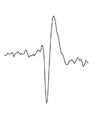Quick links from the past week in mind and brain news:

The now expanded megalist of ‘Psychologists on Twitter’ is going strong over at The BPS Research Digest.
New Scientist has a special section that collects coverage from the recent Society for Neuroscience annual megaconference. From orgasms to virtual reality.
The debate over the earliest use of tools by humans has become all scowls and flying handbags. Not Exactly Rocket Science has brilliant coverage of the heated debate.
Discover Magazine covers a technical but fascinating phenomenon called the ‘psychological refractory period’ – sort of like your brain’s recovery zone – and what it tells us about how your brain manages cognitive load.
There’s a really fantastic piece on the neuroscience of time perception over at io9.
The New York Times on covers how children as young as 3 are less likely to help a person after they have seen them harm someone else – suggesting an early development of the ability to understand intention.
This may be one of the most enraging pieces you read all week. OpenMedicine covers how AstraZeneca buried negative findings on its antipsychotic drug Seroquel. Taken from company emails that came to light in a recent court case.
Time covers a fascinating study on stoners, stereotype threat and the cognitive impact of marijuana.
A Swedish girl developed all the major symptoms of autism at 14, following a viral infection. Another wonderful post from Neuroskeptic covers the case.
Discovery News has a piece on how some ancient Peruvian temples may have been designed with acoustics designed to interact with mind-altering drugs.
Mental illness suspected in ‘fairy abduction’. Another curious case covered by the wonderful Providentia blog.
The Guardian has a great piece on the latest development in optogenetics – light control of neurons – hot from SfN.
Neurowriter Jonah Lehrer is one of Salon’s sexiest men of 2010 (aftershave coming soon). I suspect because of this brilliant analysis of the recent ‘precognition’ study.
The Chronicle of Higher Education discusses the psychological strain of art school and why it has specific mental health needs.
There was lots of misleading coverage of the genuinely interesting ‘Tetris and trauma’ study. The Neurocritic discusses what was actually done.
Is a roller coaster and a Red Bull a smart first date? asks Barking Up the Wrong Tree. I didn’t know there was any other type to be honest.
All in the Mind from ABC Radio National had a good discussion from two authors from recent ‘brain gender myth’ books.
Does money matter when raising children? More from the ever-fascinating Evidence Based Mummy.
The Economist has a fantastic piece on the ‘uncanny valley’ of robot eeriness.
The Phenomenology of Being a Jerk. A deadpan but genuine attempt to discusses the phenomenon over at The Splintered Mind.
Wired Science covers a fascinating network analysis of the economic entities in the run up to the 2008 crash.
There’s a fantastic piece on the Changizi Blog on the philosophy behind scientific inference.
CNET News says that the human brain has more switches than all computers on Earth. I would like to add that the interfaces are also much better.
The history of photography in the study of madness. Wonderfully illustrated post from Academitron.
The New York Times has an in-depth article on the high-fat ketogenic diet which has been proved to help control epilepsy.
I’ve just been really digging the h-madness history of psychiatry blog recently. Great stuff.
RadioLab has audio from a recent talk on whether technology can be thought of as an active component in evolution. A more subtle idea that I first assumed.
The bright side of the “depression-risk gene”. David Dobbs is developing an important and innovative view of psychiatric genetics, this is a great example from his Neuron Culture blog.
One thought on “2010-11-19 Spike activity”